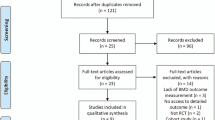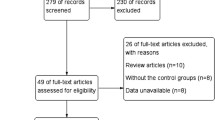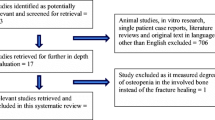Abstract
Summary
Following severe injury, biomineralization is disrupted and limited therapeutic options exist to correct these pathologic changes. This study utilized a clinically relevant murine model of polytrauma including a severe injury with concomitant musculoskeletal injuries to identify when bisphosphonate administration can prevent the paradoxical decrease of biomineralization in bone and increased biomineralization in soft tissues, yet not interfere with musculoskeletal repair.
Introduction
Systemic and intrinsic mechanisms in bone and soft tissues help promote biomineralization to the skeleton, while preventing it in soft tissues. However, severe injury can disrupt this homeostatic biomineralization tropism, leading to adverse patient outcomes due to a paradoxical decrease of biomineralization in bone and increased biomineralization in soft tissues. There remains a need for therapeutics that restore the natural tropism of biomineralization in severely injured patients. Bisphosphonates can elicit potent effects on biomineralization, though with variable impact on musculoskeletal repair. Thus, a critical clinical question remains as to the optimal time to initiate bisphosphonate therapy in patients following a polytrauma, in which bone and muscle are injured in combination with a severe injury, such as a burn.
Methods
To test the hypothesis that the dichotomous effects of bisphosphonates are dependent upon the time of administration relative to the ongoing biomineralization in reparative bone and soft tissues, this study utilized murine models of isolated injury or polytrauma with a severe injury, in conjunction with sensitive, longitudinal measure of musculoskeletal repair.
Results
This study demonstrated that if administered at the time of injury, bisphosphonates prevented severe injury-induced bone loss and soft tissue calcification, but did not interfere with bone repair or remodeling. However, if administered between 7 and 21 days post-injury, bisphosphonates temporally and spatially localized to sites of active biomineralization, leading to impaired fracture callus remodeling and permanence of soft tissue calcification.
Conclusion
There is a specific pharmacologic window following polytrauma that bisphosphonates can prevent the consequences of dysregulated biomineralization, yet not impair musculoskeletal regeneration.





Similar content being viewed by others
Availability of data and material
All pertinent data can be found within the following manuscript. Raw data will be provided by the senior author upon request.
Code availability
Not applicable
References
Bajwa NM, Kesavan C, Mohan S (2018) Long-term consequences of traumatic brain injury in bone metabolism. Front Neurol 9:115
Smith E, Comiskey C, Carroll A (2016) Prevalence of and risk factors for osteoporosis in adults with acquired brain injury. Ir J Med Sci 185(2):473–481
Scarvell JM, Van Twest MS, Stanton SF, Burski G, Smith PN (2013) Prevalence of undisclosed osteoporosis in patients with minimal trauma fractures: a prospective cohort study. Phys Sportsmed 41(2):38–43
El Masry MA, Saha A, Calder SJ (2005) Transient osteoporosis of the knee following trauma. J Bone Joint Surg (Br) 87(9):1272–1274
Jay MS, Saphyakhajon P, Scott R, Linder CW, Grossman BJ (1981) Bone and joint changes following burn injury. Clin Pediatr (Phila) 20(11):734–736
Klein GL, Wimalawansa SJ, Kulkarni G, Sherrard DJ, Sanford AP, Herndon DN (2005) The efficacy of acute administration of pamidronate on the conservation of bone mass following severe burn injury in children: a double-blind, randomized, controlled study. Osteoporos Int 16(6):631–635
Moore-Lotridge SN, Ihejirika R, Gibson BHY, Posey SL, Mignemi NA, Cole HA et al (2021) Severe injury-induced osteoporosis and skeletal muscle mineralization: are these related complications? Bone Rep 14:100743
Simonsen LL, Sonne-Holm S, Krasheninnikoff M, Engberg AW (2007) Symptomatic heterotopic ossification after very severe traumatic brain injury in 114 patients: incidence and risk factors. Injury. 38(10):1146–1150
Citta-Pietrolungo TJ, Alexander MA, Steg NL (1992) Early detection of heterotopic ossification in young patients with traumatic brain injury. Arch Phys Med Rehabil 73(3):258–262
Mignemi NA, Yuasa M, Baker CE, Moore SN, Ihejirika RC, Oelsner WK et al (2017) Plasmin prevents dystrophic calcification after muscle injury. J Bone Miner Res 32(2):294–308
Moore SN, Tanner SB, Schoenecker JG (2015) Bisphosphonates: from softening water to treating PXE. Cell Cycle 14(9):1354–1355
Kennel KA, Drake MT (2009) Adverse effects of bisphosphonates: implications for osteoporosis management. Mayo Clin Proc 84(7):632–637 quiz 8
Russell RG (2011) Bisphosphonates: the first 40 years. Bone. 49(1):2–19
Drake MT, Clarke BL, Khosla S (2008) Bisphosphonates: mechanism of action and role in clinical practice. Mayo Clin Proc 83(9):1032–1045
Leu CT, Luegmayr E, Freedman LP, Rodan GA, Reszka AA (2006) Relative binding affinities of bisphosphonates for human bone and relationship to antiresorptive efficacy. Bone. 38(5):628–636
Tanner SB (2011) Choosing a treatment for patients at the time a fracture is presented. Curr Osteoporos Rep 9(3):156
Lyles KW, Colón-Emeric CS, Magaziner JS, Adachi JD, Pieper CF, Mautalen C et al (2007) Zoledronic acid and clinical fractures and mortality after hip fracture. N Engl J Med 357(18):1799–1809
Eriksen EF, Lyles KW, Colón-Emeric CS, Pieper CF, Magaziner JS, Adachi JD et al (2009) Antifracture efficacy and reduction of mortality in relation to timing of the first dose of zoledronic acid after hip fracture. J Bone Miner Res 24(7):1308–1313
Bukata SV (2011) Systemic administration of pharmacological agents and bone repair: what can we expect. Injury. 42(6):605–608
Korff S, Riechert N, Schoensiegel F, Weichenhan D, Autschbach F, Katus HA et al (2006) Calcification of myocardial necrosis is common in mice. Virchows Arch 448(5):630–638
Aherrahrou Z, Doehring LC, Ehlers E-M, Liptau H, Depping R, Linsel-Nitschke P et al (2008) An alternative splice variant in Abcc6, the gene causing dystrophic calcification, leads to protein deficiency in C3H/He mice. J Biol Chem 283(12):7608–7615
Korff S, Schoensiegel F, Riechert N, Weichenhan D, Katus HA, Ivandic BT (2006) Fine mapping of Dyscalc1, the major genetic determinant of dystrophic cardiac calcification in mice. Physiol Genomics 25(3):387–392
Moore-Lotridge SN, Li Q, Gibson BH, Martin JT, Hawley GD, Arnold TH et al (2019) Trauma-induced nanohydroxyapatite deposition in skeletal muscle is sufficient to drive heterotopic ossification. Calcif Tissue Int 104(4):411–425
Yuasa M, Mignemi NA, Nyman JS, Duvall CL, Schwartz HS, Okawa A et al (2015) Fibrinolysis is essential for fracture repair and prevention of heterotopic ossification. J Clin Invest 125(8):3117–3131
Yuasa M, Mignemi NA, Barnett JV, Cates JM, Nyman JS, Okawa A et al (2014) The temporal and spatial development of vascularity in a healing displaced fracture. Bone. 67:208–221
Ubellacker JM, Haider M-T, DeCristo MJ, Allocca G, Brown NJ, Silver DP et al (2017) Zoledronic acid alters hematopoiesis and generates breast tumor-suppressive bone marrow cells. Breast Cancer Res 19(1):23
Daubiné F, Le Gall C, Gasser J, Green J, Clézardin P (2007) Antitumor effects of clinical dosing regimens of bisphosphonates in experimental breast cancer bone metastasis. J Natl Cancer Inst 99(4):322–330
Moore SN, Hawley GD, Smith EN, Mignemi NA, Ihejirika RC, Yuasa M et al (2016) Validation of a radiography-based quantification designed to longitudinally monitor soft tissue calcification in skeletal muscle. PLoS One 11(7):e0159624
Yuasa M, Saito M, Molina C, Moore-Lotridge SN, Benvenuti MA, Mignemi NA et al (2018) Unexpected timely fracture union in matrix metalloproteinase 9 deficient mice. PLoS One 13(5):e0198088
Li Y-T, Cai H-F, Zhang Z-L (2015) Timing of the initiation of bisphosphonates after surgery for fracture healing: a systematic review and meta-analysis of randomized controlled trials. Osteoporos Int 26(2):431–441
Matos MA, Tannuri U, Guarniero R (2010) The effect of zoledronate during bone healing. J Orthop Traumatol 11(1):7–12
Amanat N, McDonald M, Godfrey C, Bilston L, Little D (2007) Optimal timing of a single dose of zoledronic acid to increase strength in rat fracture repair. J Bone Miner Res 22(6):867–876
Shafer DM, Bay C, Caruso DM, Foster KN (2008) The use of eidronate disodium in the prevention of heterotopic ossification in burn patients. Burns. 34(3):355–360
Spielman G, Gennarelli T, Rogers C (1983) Disodium etidronate: its role in preventing heterotopic ossification in severe head injury. Arch Phys Med Rehabil 64(11):539–542
Fleisch H, Russell R, Straumann F (1966) Effect of pyrophosphate on hydroxyapatite and its implications in calcium homeostasis. Nature. 212(5065):901–903
Russell R, Fleisch H (1970) Pyrophosphate, phosphonates and pyrophosphatases in the regulation of calcification and calcium homeostasis. Proc R Soc Med 63(9):876
Rifkin BR, Baker RL, Coleman SJ (1979) An ultrastructural study of macrophage-mediated resorption of calcified tissue. Cell Tissue Res 202(1):125–132
Luckman SP, Coxon FP, Ebetino FH, Russell RGG, Rogers MJ (1998) Heterocycle-containing bisphosphonates cause apoptosis and inhibit bone resorption by preventing protein prenylation: evidence from structure-activity relationships in J774 macrophages. J Bone Miner Res 13(11):1668–1678
Klein GL (2014) Bisphosphonates in pediatric burn injury. Bone Drugs in Pediatrics. Springer, pp 101–115
Klein GL (2021) The products of bone resorption and their roles in metabolism: lessons from the study of burns. Osteology. 1(2):73–79
Li Q, Kingman J, Sundberg JP, Levine MA, Uitto J (2018) Etidronate prevents, but does not reverse, ectopic mineralization in a mouse model of pseudoxanthoma elasticum (Abcc6−/−). Oncotarget. 9(56):30721
Gibson BHY, Duvernay MT, Moore-Lotridge SN, Flick MJ, Schoenecker JG (2020) Plasminogen activation in the musculoskeletal acute phase response: injury, repair, and disease. Res Pract Thromb Haemost 4(4):469–480
Klein GL (2020) Burn injury and restoration of muscle function. Bone. 132:115194
Baker CE, Moore-Lotridge SN, Hysong AA, Posey SL, Robinette JP, Blum DM et al (2018) Bone fracture acute phase response-a unifying theory of fracture repair: clinical and scientific implications. Clin Rev Bone Miner Metab 16(4):142–158
Acknowledgements
The authors would like to thank the members of the Schoenecker lab, in particular Mr. Zachary Backstrom, Mr. J. Court Reese, Dr. Joey Barnett, Dr. Rivka Ihejirika, Dr. Alex Hysong, and Dr. Deke Blum, for their experimental assistance, and help in critically reviewing this manuscript. We would also like to acknowledge our family, friends, and academic colleagues for supporting this work. Finally, we would like to acknowledge the Vanderbilt Small Animal-Imaging Core and the Vanderbilt Animal Care staff for supplying and maintaining the imaging equipment and our animal facility, respectively.
Funding
Funding for this work was provided by the National Institutes of Health ([1R01GM126062-01A1, NIGMS, JGS], [T32GM007628, NIGMS, SNML], [T32AR059039, NIAMS, BGHY], [1F31HL149340, NHLBI, BGHY]), the Vanderbilt University Medical Center Department of Orthopaedics and Rehabilitation (JGS), the Jeffrey W. Mast Chair in Orthopaedics Trauma and Hip Surgery (JGS), the Department of Veterans Affairs (JSN, BX005062), and the Caitlin Lovejoy Fund (JGS). Use of the Translational Pathology Shared Resource was supported by NCI/NIH Cancer Center Support Grant (2P30 CA068485-14) and the Vanderbilt Mouse Metabolic Phenotyping Center Grant (5U24DK059637-13). μCT imaging and analysis were supported in part by the Center for Small Animal Imaging at the Vanderbilt University Institute of Imaging Sciences (S10RR027631) from the NIH. Grant 1S10OD021804-01A1 supported the Replacement and Upgrade of an Optical Imaging System for Small Animals, housed in the Vanderbilt Center for Small Animal Imaging, and used in this proposal. Funding sources for this project had no involvement in study design, collection, and analysis of data, writing of the report, or decision in submitting this article for publication.
Author information
Authors and Affiliations
Contributions
MS*: data curation; formal analysis; methodology; validation; visualization; writing—reviews and editing
SNML*: data curation; formal analysis; methodology; validation; visualization; writing of original draft; writing—reviews and editing
SU: data curation; formal analysis; methodology; visualization; writing—reviews and editing
JPR: data curation; visualization; writing of original draft; writing—reviews and editing
SLP: data curation; visualization; writing of original draft; writing—reviews and editing
BHYG: validation; visualization; writing—reviews and editing
HAC: formal analysis; visualization; writing—reviews and editing
SE: data curation; formal analysis; methodology; writing—reviews and editing
TY: project administration; resources; supervision; writing—reviews and editing
SAG: formal analysis; methodology; writing—reviews and editing
JRM: formal analysis; resources; validation; visualization; writing—reviews and editing
SBT: formal analysis; methodology; writing—reviews and editing
JSN: formal analysis; methodology; validation; visualization; writing—reviews and editing
JGS: formal analysis; funding acquisition; project administration; supervision; writing of original draft; writing—reviews and editing
*Authors share authorship position. Order was agreed upon by authors in relation to present work, seniority, and future publications in which authorship order will be reversed.
Corresponding authors
Ethics declarations
Ethics approval
Two murine models were examined as part of this study. All animal procedures were approved by the Vanderbilt Institutional Animal Care and Use Committee (M1600231 and M1600225). No human studies were conducted as part of this study.
Conflict of interest
JGS receives research funding and research support from IONIS Pharmaceuticals, PXE International, OrthoPediatrics, the United States Department of Defense, and the National Institutes of health. SNML receives research funding unrelated to this study from the American Society of Bone and Mineral Research (ASBMR). SLP is a member of the US Air Force. All other authors declare no competing interests.
Disclaimer
The views expressed in this article are those of the author and do not reflect the official policy or position of the US Air Force, Department of Defense, or the US Government.
Additional information
Publisher’s note
Springer Nature remains neutral with regard to jurisdictional claims in published maps and institutional affiliations.
Supplementary information

Supplemental Figure 1
BALB/cJ mice Develop Soft Tissue Calcification Following Injury. Aligning with the previously reported genetic predisposition for soft tissue calcification [20,21,22], when skeletal muscle is injured, BALB/cJ mice develop marked dystrophic calcification that progressivly regresses over 28DPI. A) Logitudinal xray and end-point μCT analysis (Scale bar: 1mm) allow for the sensitive detection of calcification within skeletal muscle. Yellow outlines; soft tissue calcification within the injured lower limb. Comparatively, wild type C57BL/6J mice that possess no known genetic prediposition to soft tissue calcification do not develop detectable soft tissue calcification following muscle injury alone [7, 10]. B) Soft tissue calcification detected in BALB/cJ mice by xray can be quantified via the soft tissue calcification scoring system (STiCSS) [28]. Different colored lines denote individual, 6-week-old animals (N=5). C) Example histologic images (20x magnification) at 7 and 28 DPI illustratating marked soft tissue calcification in areas of damaged skeletal muscle in BALB/cJ mice that regress over 28 days. Hematoxylin and eosin (H&E) staining is utilized to denote skeletal muscle morphology. Von kossa staining denotes calcium deposits (black). Scale bar denotes 100 microns. (PNG 3871 kb)

Supplemental Figure 2
Modified Soft Tissue Calcification Scoring System for use in Quadriceps. Images represent an ordinal scale from 0-4, with “4” representing robust calcification of greater or equal to 75% of the visible quadriceps area becoming mineralized, “3” representing 50-74% calcification of the visible quadriceps, “2” represent 25-49% calcification of the visible quadriceps, “1” representing less than 25% calcification of the quadriceps, and 0 representing no visible calcification within the quadriceps. (PNG 3482 kb)

Supplemental Figure 3
μCT-FEA of Fracture Callus on femur mid-shaft. Boundary conditions prescribed a unit torque around the vertical axis. Displacement of nodes at the distal face (z=zmin) were fixed in all directions. At the proximal face (z=zmax), force vectors in the transverse plane (i.e. x- and y-directions) were distributed to impart a unit torque that twists the bone about center. (PNG 1868 kb)

Supplemental Figure 4
Histological analysis of injured quadriceps at 42 DPI. Marked nodules of dystrophic calcification are still observed at 42 DPI within the damaged skeletal muscle of mice administered zoledronate beginning 7 DPI and continuing weekly through 42 DPI. N=3 animals assessed per treatment cohort. Pre-dosing: administration of zoledronate 7 days before injury and at the time of injury (pre-dosing). Continual dosing: administration of zoledronate weekly beginning 7 DPI and continuing through 42 DPI. (PNG 11574 kb)

Supplemental Figure 5
Two Dimensional Images of Fracture Femur at 42 DPI. Axial, coronal and sagittal Images obtained following μCT imaging of two-dimensional planes of section. White arrows indicate the detection of calcified skeletal muscle, as previously visualized in 3D reconstructions (Fig. 3C); yellow arrows indicate enlarged fracture callus as quantified in Fig. 4A&B. Images are representative of the cohort. Scale bare = 1.0mm. BP: bisphosphonate. Pre-dosing: administration of zoledronate 7 days before injury and at the time of injury (pre-dosing). Continual dosing: administration of zoledronate weekly beginning 7 DPI and continuing through 42 DPI. (PNG 12617 kb)
Supplementary Table 1
(DOCX 29 kb)
Supplementary Table 2
(DOCX 26 kb)
Supplementary Table 3
(DOCX 20 kb)
Supplementary Table 4
(DOCX 20 kb)
Rights and permissions
About this article
Cite this article
Saito, M., Moore-Lotridge, S.N., Uppuganti, S. et al. Determining the pharmacologic window of bisphosphonates that mitigates severe injury-induced osteoporosis and muscle calcification, while preserving fracture repair. Osteoporos Int 33, 807–820 (2022). https://doi.org/10.1007/s00198-021-06208-7
Received:
Accepted:
Published:
Issue Date:
DOI: https://doi.org/10.1007/s00198-021-06208-7




